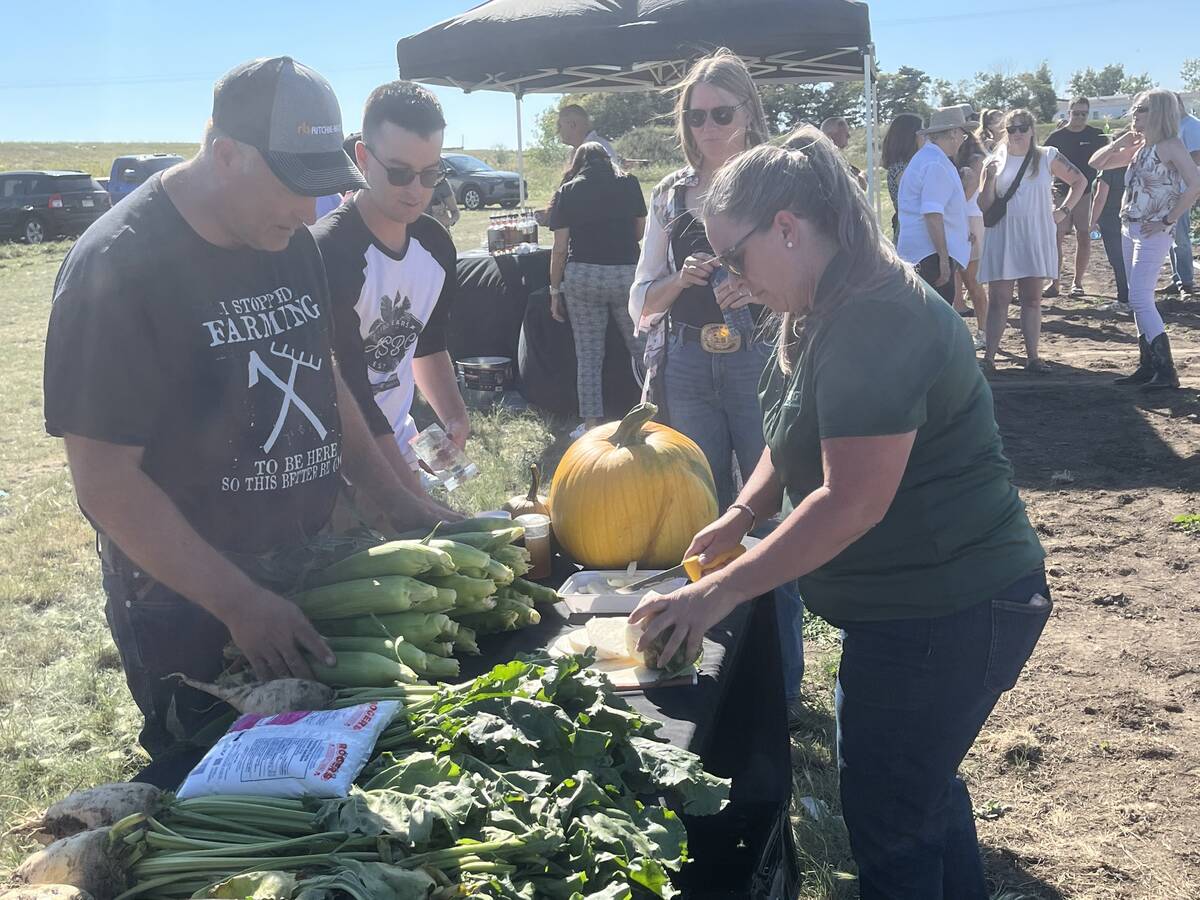LINDELL BEACH, B.C. –Something strange started happening to newborn beef and dairy calves in Europe four years ago.
They had low blood cell counts, their bone marrow was depleted and their platelets were destroyed. As a result, the animals’ blood clotting ability failed and they bled spontaneously from their nostrils, rectum, mouth and tagging and injection sites. There would be bruising on the gums and around the eyes, while blood shed in the feces indicated internal bleeding.
The condition was usually fatal, at a death rate of 95 percent, and calves would die within weeks of birth. The condition became known as bleeding calf syndrome, or bovine neonatal pancytopenia (BNP).
Read Also

Alberta farm lives up to corn capital reputation
Farm to Table Tour highlighting to consumers where their food comes from features Molnar Farms which grows a large variety of market fruits and vegetables including corn, with Taber being known as the Corn Capital of Canada.
The syndrome was first detected in Germany in 2007, although it may have shown up in Belgium in 2006, and then reported in England, Scotland, Wales, Belgium, France and the Netherlands.
Antimicrobials, clotting agents, blood transfusions and supportive treatment didn’t work, and the cause remained a mystery until recent research found a link between a vaccine used on cows against bovine viral diarrhea virus (BVDV) and bleeding calf syndrome.
“All in all, BNP is a rare disease,” said Till Ruemenapf, a professor with the Justus Liebig University in Giessen, Germany.
“There are about 4,500 confirmed cases. It is unclear, however, how many unconfirmed cases occurred. Farmers panicked when several calves of their herd were affected or dams repeatedly gave birth to BNP calves. Initially it was suspected that infectious or toxic agents may be involved, hence there was much fear of what was next to come.”
The toxic agent was a lot closer to home than many initially suspected.
Pfizer introduced its Pregsure vaccine in Europe in 2004 to protect against BVDV. The first cases of BNP occurred around 2007.
The vaccine was introduced in New Zealand in 2008 and the disease was reported in 2011.
“This indicates that multiple vaccinations are necessary before the disease appears,” said Ruemenapf.
“In Europe, the recommended vaccination schedule for Pregsure was a yearly immunization for cows.”
What happens to calves when their dams are given Pregsure is complex. The suggestion is that the antibodies in the colostrum are actually responsible for destroying the calf’s blood cells.
The disease was seen as an immune-mediated condition associated with the absorption of colostrum antibodies that react with cells in the calf’s bone marrow. Mothers produce these antibodies in response to the BVDV vaccine with the release of proteins.
Thus, consumption of colostrum was thought to be the key triggering event.
Compatibility issue
The process is linked to immunological cells known as major histocompatibility complex class 1 (MHC-1).
Each individual has its own characteristic set of MHC-1 cells determined through the genetics of its parents. In humans it is often called human leucocyte antigen HLA.
“MHC-1 is an important determinant for organ transplantations and bone marrow grafts,” said Ruemenapf.
“You may have heard of typing (testing) large numbers of volunteers in order to find a suitable bone marrow donor for children with leukemia. Usually close relatives are the best pick. A graft with a matching MHC-1 set-up is pivotal to healing.”
However, in the cattle industry these immunological cells seem to be causing a problem in a complex chain of events because the MHC-l molecules exist in the vaccine, where they are a component of the cells used for propagation of the vaccine virus.
“Upon harvest of the viral antigens that are the desired components of the vaccine, the cellular components cannot be removed completely,” Ruemenapf said.
He said anti MHC-1 antibodies are elevated only in Pregsure-vaccinated dams if the particular MHC-l type in the vaccine differs from that of the cow.
They are not harmful to the cow but cause trouble if by chance the calf has the same MHC-l type as was present in the vaccine.
“By chance means the calf has dangerous MHC-1 genes inherited from the sire,” he said.
“In this case, the maternal anti MHC-l antibodies attack the calf’s bone marrow cells and lead to BNP.”
Alloantibodies, which are antibodies generated by one individual of a species against another of the same species, are produced by the mother if it has different MHC-1 than the bovine cells used to grow the vaccine.
However, if its calf has the same MHC-1 cells as in the vaccine and consumes its colostrum, the alloantibodies attack and destroy the calf’s own cells, including those of the bone marrow. Unable to produce platelets, its blood cannot coagulate and the calf bleeds to death.
Pfizer pulled the vaccine from the European market in June 2010 and from New Zealand in August 2011 when the link between the vaccine and colostrum consumption emerged.
Ruemanapf said many farmers disposed of dams with a BNP history. The number of cases has since dropped and there are no known reports of a BNP occurrence in Canada or the United States.
The BVDV virus is a serious concern to the cattle industry. It is responsible for compromised fertility in dairy herds and has major implications for farming and animal welfare.
Alternative vaccines are either modified life vaccines (MLV) or inactivated or killed vaccines (KV).
“MLV are very unlikely to cause BNP because they contain only minute amounts of antigen from the cells used for production of the vaccine,” Ruemanapf said.
“MLVs are very popular in North America so that repeated vaccination using a Pregsure analogous product (such as Cattlemaster Gold plus) is rare. MLV are very efficacious but should not be administered during pregnancy because they may harm the fetus.”
Concerns were raised in New Zealand about whether colostrum or milk from vaccinated dairy cows would affect human health, but there is no evidence of any risk. As well, affected calves at such a young age would not enter the food chain.














